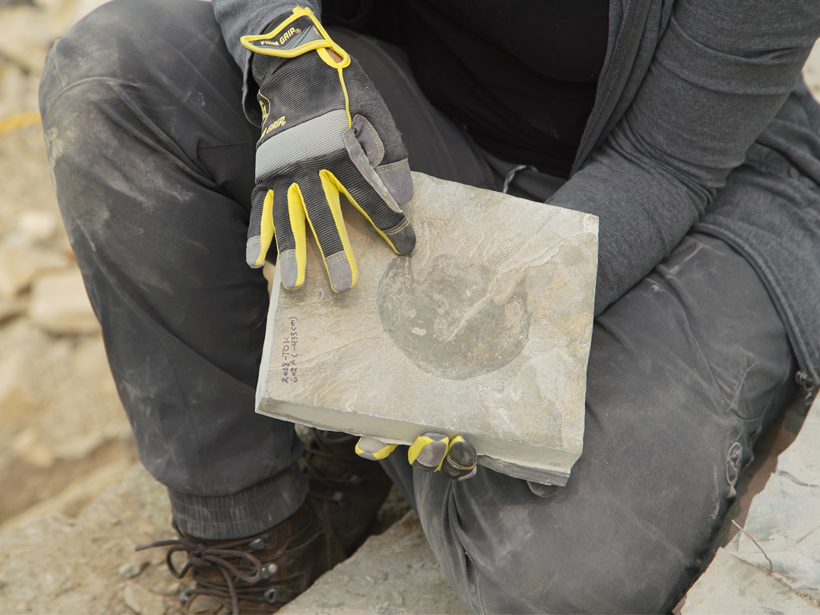Star Wars fans may have a new favorite fossil: Cambroraster falcatus.
Through several years of fossil excavations in British Columbia, researchers discovered the ancient predator that once ruled the primeval seafloor with a body the shape of the Millennium Falcon.
In a new study, Joe Moysiuk of the University of Toronto and Royal Ontario Museum and his colleagues describe the species on the basis of 140 individual Cambroraster specimens fossilized in rock slabs in the Burgess Shale deposit on the steep slopes of the Canadian Rockies. The animals hail from more than half a billion years ago during the Cambrian period, a time of incredible diversification of life on Earth. By looking at features visible in different fossilized contortions of Cambroraster, the researchers re-created the animal’s body shape, inferred its feeding habits, and compared it with other species alive at the time.
Cambroraster had a pineapple slice–shaped mouth, two beady eyes, and eight pairs of lateral flaps that stretched along the lower portion of its body.
Cambroraster had a pineapple slice–shaped mouth, two beady eyes, and eight pairs of lateral flaps that stretched along the lower portion of its body. All told, the animal could be up to a foot long, meaning that the creature would have dwarfed most other Cambrian animals. Similar to modern-day horseshoe crabs, the animal’s enormous head was covered with a protective shell, which, according to the researchers, likely helped Cambroraster plow through sediment on the ocean bottom while rooting around for its next meal.
Cambroraster is a distant cousin of other Cambrian predators, such as the shrimp-like Anomalocaris. But, the team reported, the newly discovered species fed in a distinct way, revealing that even at the dawn of complex life on Earth, animals were securing unique niches within early animal ecosystems.
The new study will be published on 31 July in Proceedings of the Royal Society B. To watch an animation of Cambroraster swimming, check out this video provided by the Royal Ontario Museum.

—Jenessa Duncombe (@jrdscience), News Writing and Production Fellow
Citation:
Duncombe, J. (2019), Newly discovered fossil species named after Star Wars starship, Eos, 100, https://doi.org/10.1029/2019EO130013. Published on 30 July 2019.
Text © 2019. AGU. CC BY-NC-ND 3.0
Except where otherwise noted, images are subject to copyright. Any reuse without express permission from the copyright owner is prohibited.
Text © 2019. AGU. CC BY-NC-ND 3.0
Except where otherwise noted, images are subject to copyright. Any reuse without express permission from the copyright owner is prohibited.

